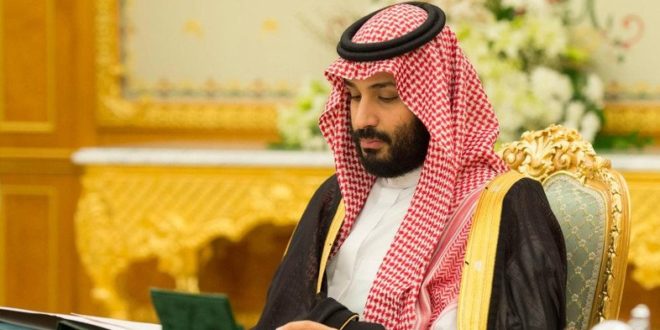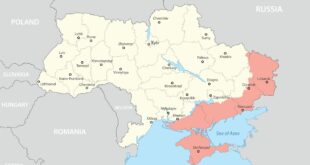Shehab Al-Makahleh
Saudi Arabia’s Crown Prince Mohammad bin Salman, deputy premier and minister of defense’s visit to the US is very indicative at this time as it is the first for him as crown prince and it paves the way for proceeding ahead with economic plans in pursuance of Vision 2030.
The crown prince arrives in Washington DC with five agendas: economic, political, military, technology transfer and financial investments. He will tour New York, Washington DC, Seattle, California’s Silicon Valley, Houston and Boston with the aim of improving Saudi-American relations.
Investment cooperation
The United States and Saudi Arabia have a common vision on international issues. Given the changing geopolitical scene, the two countries have utmost interest to maintain strong ties and sustain friendly relations. The Crown Prince’s US tour will include a planned meeting with US President Donald Trump and his advisers.
He will pay visits to Wall Street in New York and to the Silicon Valley in California and Seattle for heavy industries. He is expected to tour Houston for gas and oil talks and in Boston for higher education cooperation. This is their first meeting since last May 21, 2017 when Trump visited Riyadh.
The Crown Prince is also set to hold talks with Apple and Amazon executives to open outlets and data centers in Saudi Arabia, in a bid to redirect the Saudi economy to be knowledge-oriented and technology-based, benefitting from American expertise to turbo-charge his plans to turn the kingdom into a new Silicon Valley Hub in the Middle East. There is a historic alteration in the nature of economic relations between Washington and Riyadh, from oil to economic development and financial and technological investments.
Saudi Arabia is eager to cement political, economic and military ties with the US through major deals that would change the nature of cooperation into win-win equation
The slated agreements to be signed will shape the nature of future economic partnership between both countries as the pacts will enhance investments through joint ventures, through American backing of investments in Saudi Arabia or through supporting Saudi investments in the US treasuries or through offering Aramco shares the New York Stock Exchange as Trump is vying with London to host the stock market listing of Aramco which is estimated at $1.5 trillion.
Since last May, such huge agreements which are expected to be signed in the US could not have been achieved without a colossal modification in the nature of Saudi economy that albeit determines the relationship between Riyadh and Washington as the latter has pushed Saudi for more modernization for full capacity of cooperation to support Saudi Vision 2030.
The Crown Prince’s visit is promising to launch a new era of relations between the two countries with qualitative changes in strategic relations for a long term strategic and economic partnership through diversification of the kingdom’s economy.
Thus, the visit does not stand at the traditional basis, and is different from previous Saudi officials’ visits to the US because it opens the door to major financial and investment firms and corporations in the US and in Saudi Arabia to launch joint ventures and investments after an American greenlight for domestic foundations to set up projects in Saudi Arabia.
The visit sends a series of messages to key players at the regional and international levels. According to some experts, the visit is slated to witness a greater inflow of international investments into the Saudi economy, mainly in technological fields. The Crown Prince seeks from his tour to New York to gain further support of Riyadh as a global industrial and financial center in the Middle East through new qualitative partnerships with leading American companies.
Political synchronization
Both Saudi and US leaders have sharp anti-Iran positions, which brings the current US administration closer to Riyadh. The Obama administration had seen unbridled rigidity and uninhibited pressure in the relationship between the US and the Gulf Cooperation Council (GCC) because the former president ignored Iran’s orientations and actions in the region at the expense of Arab Gulf state’s interests.
This was part of the process of restructuring US foreign policy toward the Middle East and rapprochement with Iran, with the aim of strengthening what Obama considered moderate wing in Tehran, leading to 2015 nuclear deal with Iran. Trump’s visit to Saudi Arabia last year was aimed to restore these relations and build on them for a sustainable peace in the Middle East.
The upcoming visit of the Crown Prince aims to rebalance US policy toward the region as former American administration has adopted policies against the region’s interests, which allowed Russia and China to return to the region as key players by formulating alliances, mainly with Iran and Turkey.
Among the topics on the Crown Prince’s visit are combating terrorism and extremist factions as well as efforts to counter Iranian interference in Arab affairs. The two sides are also likely to discuss the war in Yemen and Syria, mainly the current developments in Eastern Ghouta.
The Palestinian-Israeli conflict is on top of the agenda of the Crown Prince as his visit comes few days after Israeli Prime Minister Benjamin Netanyahu’s visit to Washington and his talks with American officials regarding the final settlement of the Arab-Israeli conflict. The Crown Prince will try to convince Trump to postpone moving the American embassy to Jerusalem until final settlement is reached.
Nuclear deals
Trump will open talks with the Crown Prince on a potentially lucrative nuclear power agreement, indivisibly connected to an Obama-era atomic agreement with Iran, with promises of billions of dollars in contracts for American firms. Saudi sources believe that Riyadh, in less than a month, will unveil the names of companies winning the tender for the construction of two nuclear power reactors, scheduled to start at the end of this year 2018, in a move Riyadh aims to enter the nuclear club for the first time in its history.
Under the framework of the Saudi National Atomic Energy Project, Saudi Arabia aims to build 16 nuclear reactors over the next 20-25 years, which are to be under the supervision of the King Abdullah City for Atomic and Renewable Energy and are aimed at enabling the country to benefit from the peaceful uses of nuclear power.
The idea to construct nuclear reactors in Saudi Arabia is not new; however, it has gathered momentum in the past two years. New motives for Riyadh have crystallized to proceed with the construction of nuclear reactors, particularly in the aftermath of the pact signed with Iran during Obama’s administration, which hampered negotiations between Riyadh and Washington. Some analysts in the White House believe that the deal with Iran “made it difficult to force Saudi Arabia to abide by Law 123.”
Trump knows that American companies are competing with Korean, Chinese and Russian. If he seeks to support the American companies in this deal, he has to give green light when he talks to the Crown Prince. Thus, Trump has to abandon certain controls that restrict nuclear proliferation. Therefore, if Saudis reach agreement without any restrictions, it would be a remarkable shift in US nuclear policy since 50 years.
Saudi Arabia is eager to cement political, economic and military ties with the US through major deals that would change the nature of cooperation into win-win equation. Major focus, however, will also be on the “Century Deal” to end the Palestinian-Israeli Conflict.
_________________________
Shehab Al-Makahleh is Director of Geostrategic Media Center, senior media and political analyst in the Middle East, adviser to many international consultancies. He can be reached at: @shehabmakahleh and @Geostrat_ME.
Originally published by Al-Arabiya English
 Geostrategic Media Political Commentary, Analysis, Security, Defense
Geostrategic Media Political Commentary, Analysis, Security, Defense





